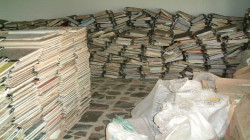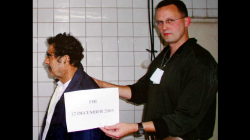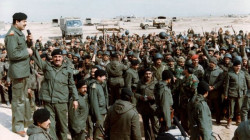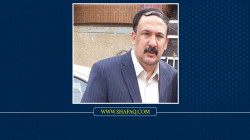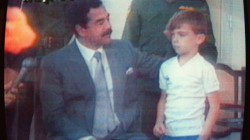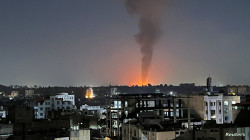Executed by Saddam: Farhad Bazoft's mother tells the story
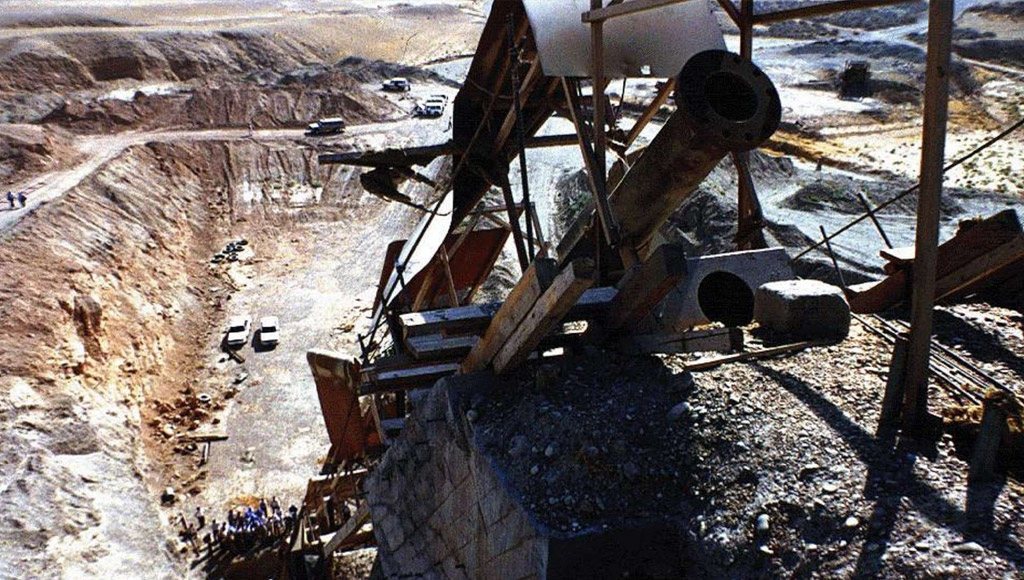
Shafaq News/ Leaning back in a loose cotton shirt within the lobby of Baghdad’s Royal Tulip Al Rasheed hotel, Farzad Bazoft looks like a man at ease. Despite investigating Iraq’s secret arms programme in the back yard of Saddam Hussein, the Observer journalist knew that the following day he would be gone, back to the safety of London.
Farzad never made it to the UK. The picture chronicles his last night of freedom. Within 24 hours he would be imprisoned in solitary confinement. Then he would be starved and beaten, the start of a chain of events that would culminate, amid international furore, with his execution at the behest of Saddam.
“He was a beautiful man, with beautiful eyes. And he always remained calm, even then,” said Farzad’s mother, Nosrat Bazoft, pointing at the picture during her first interview since the death of her son on 15 March 1990.
Invited by Saddam’s government, Farzad had travelled to Baghdad from London in early September 1989, a trip that coincided with reports of a huge explosion at a military complex near the Iraqi capital. Sensing a global scoop, he started investigating amid suggestions that the blast may have been caused by experiments with chemical or nuclear weapons.
Days later, the 31-year-old was arrested at Baghdad airport after being falsely accused of spying, incarcerated and hanged in Abu Ghraib prison outside Baghdad.
Until now it was assumed that everything that there was to know about the killing of Farzad Bazoft was known.
But Nosrat, 80, has decided to reveal details of a mysterious theft that she believes demonstrates the Iraqi authorities were spying on her son in London before his trip to Baghdad. Documents relating to the UK’s arms trade to Iraq were stolen from Farzad, she says, during an alleged break-in days before his ill-fated trip to Baghdad.
She believes the break-in was perpetrated by Iraqi intelligence and that afterwards her son appeared unusually pensive as he prepared to travel to Baghdad.
Speaking at her home in south London, Nosrat recalled how her son rang her to tell her that someone had broken into a friend’s car parked near the Observer’s offices and taken his documents relating to Saddam’s “supergun”.
The Iraqi dictator had commissioned a programme in 1988 to build a space gun – Project Babylon – which involved the export of components from the UK.
The idea to build an enormous cannon capable of firing projectiles into orbit was scrapped after the targeted killing of the programme’s lead expert, the Canadian artillery specialist Gerald Bull, on 22 March 1990 – a week after Farzad’s execution.
“Days before the flight, a friend’s car was broken into and Farzad’s Samsonite briefcases were stolen. The Samsonite briefcases contained his documents on the supergun, a story he told me he was working on,” she said.
Nosrat added that her son told her the alleged incident took place in daylight near a petrol station on Queenstown Road, south-west London, and close to what was then the Observer offices.
“He told me it happened when he just went for a coffee in the afternoon. I remember my husband telling him that he needed to be more careful.”
She believes the culprits were Iraqi spies monitoring the Iranian-born freelance reporter, who held British residency. “I think he was being spied on by Iraqi officials before the trip. I believe they were watching him,” she said.
However, she added that her eldest child never reported the incident to the police because the alleged crime happened so soon before his flight to Iraq, and Farzad also appears not to have told his journalist colleagues.
Martin Huckerby, the Observer’s then foreign editor, confirmed he had no recollection at all of any theft relating to the reporter shortly before his visit to Iraq. Richard Norton-Taylor, a senior journalist on the paper at the time, also said he had not heard of the alleged incident.
Nosrat believes the theft was, with the benefit of hindsight, a warning that Saddam’s officials were monitoring Farzad and that their invite to Iraq could have been a trap.
She said: “Farzad was set up, absolutely. Saddam was doing terrible things to everyone and Farzad was investigating him. The intention was to trap him and that’s what happened. They took him there and they trapped him,” she said.
Back then, Farzad’s trip to Baghdad seemed relatively low-risk. Not only was it the reporter’s sixth visit to the country, but he would be accompanied by other journalists on a press trip to report on elections in the country’s Kurdish areas. In addition, Farzad’s opposition to Iran’s Khomeini regime was well received by Iraqi officials.
Huckerby said: “My understanding was that he was still in the good graces of the Iraqi regime when he went. I wasn’t encouraging him to go but when he got the invite they were keen to have someone they thought was reasonably amenable in providing coverage.”
He said he was not aware of Farzad’s investigation into Saddam’s supergun, though it was conceivable the freelancer may not have shared his work.
Nosrat, however, reveals that her son was uncharacteristically apprehensive before the trip to Baghdad.
“I spoke to him just before he left; he called from the airport to say he was on his way. He sounded a bit anxious, not himself. It was like he wasn’t sure that he should be going.”
Nosrat spoke to her son most days, usually to discuss his work, and remembers warning him that investigating the sales of UK arms to Iraq for Saddam’s secret weapons programme was fraught with risk.
“I told him: ‘You’re playing with a lion’s tail,’ which is a Persian saying. These are controversial things, you’re getting too involved. I told him that Iraq is a dangerous place, but he replied that ‘they’ve invited me,’” said Farzad’s mother, speaking inside the bungalow she has called home for the past three decades.
Above her, a picture of the reporter dominates the living room wall, his familiar face resting on a small body with angel’s wings.
“But he was onto something – he wanted to expose the killing machines. The big pipes [the huge supergun barrel] were made in the UK and exported from here. Farzad even visited the factories in the UK where parts of the supergun were made.”
Less than a month after his execution, customs officers in Middlesbrough seized the barrel of a massive gun capable of fitting nuclear shells, which was bound for Iraq.
Nosrat says she still seethes with fury over the UK government’s response after her son was incarcerated at Abu Ghraib, kept in solitary confinement, starved and beaten.
She holds the then prime minister, Margaret Thatcher, personally responsible. “She didn’t do enough. Everything was her fault. She could have stopped the execution. The British government had the power to stop it. They were exporting so much trade to Saddam that they had the leverage,” Nosrat said.
The release of official government files in 2017 confirmed that Thatcher’s government opted not to take any action in retaliation for the execution of Farzad for fear of harming lucrative exports to Iraq.
Despite public promises of action against Saddam, previously secret memos revealed that cabinet ministers opted not to impose any trade restrictions because, in the words of Norman Lamont, then chief secretary to the Treasury, they would inflict “disproportionate damage on UK industry”.
Five days after Farzad was hanged, former foreign secretary Douglas Hurd concluded sanctions would be “bad for our wider commercial interests”.
Despite the views of her senior colleagues, Thatcher wanted gruesome and personal revenge for Farzad’s death, reveals Nosrat.
She recounted a visit to her home from former British consul general in Baghdad Robin Kealy – Farzad’s last visitor before his execution – who conveyed a personal message directly from the prime minister.
“He said: ‘Don’t worry, we will bring Saddam’s head on a plate for you, we will get revenge.’ Thatcher had also asked him to inquire if there was anything we could do for you. I said: ‘No, I just wanted my son back.’”
Farzad’s father, Sowaini, 92, also believes that Thatcher’s government failed in its duty to help. Forwarding a statement from a London hospital, where he is being treated after a fall, he said: “The English are responsible, especially the Conservatives. My son was an anti-war reporter and wanted to expose all the arms dealing.”
The majority of those familiar with the events surrounding Farzad’s execution believe that he was a victim of unfortunate timing: on the day he arrived in Baghdad, media reports emerged documenting the explosion at the Hillah military complex, which was suspected of secretly manufacturing chemical weapons. An ITN crew went to investigate the scene of the blast but was sent away and had its film confiscated.
Farzad took the precaution of meeting Iraq’s then deputy foreign minister, Nizar Hamdoun, and requesting to visit the complex. Then he persuaded a British nurse, Daphne Parish, to drive him to the site, where he took photographs and collected soil samples.
Weeks after being arrested at Baghdad airport as he waited for his flight back to London, Farzad made a televised confession to being an Israeli agent.
Years later, the Observer tracked down the colonel in the Iraqi intelligence service who interrogated the journalist. Kadem Askar conceded that he knew Farzad was innocent, but could not undo Saddam’s personal order to have him executed.
It was an order that Nosrat still struggles to live with. “I cannot accept he’s dead, I keep thinking he’s on a trip and will return home. Every day since it happened I have thought that.
“When I’m cooking, I put a plate aside for him to make sure I keep him some food.”
After the execution and international fallout, Farzad’s family were told to flee the Iranian city of Isfahan to the UK, with the British government waiving any requirement for a visa.
After arriving with two suitcases for the entire family the Bazofts stayed for three weeks at a hotel on London’s Edgware Road as the international uproar over the reporter’s death continued.
The journalist Kimia Zabihyan, who working for the Observer at the time, was given the task of looking after them. “I met them at the airport gate and took them to the hotel and stayed with them to support them. Zabihyan, who was then 26 years old, said: “It was really quite overwhelming dealing with their trauma, their grief.”
The experience of moving suddenly to the UK was bewildering, said Nosrat: “I was crying all the time. I had all these questions but it was all so confusing.”
Flowers arrived from Downing Street along with an invite to visit the prime minister. The family turned it down, although one of Nosrat’s sons was eager to confront Thatcher over her asylum policy. “He wanted to tell her that we are the same people that she wanted to throw out,” she said.
Weeks after the family’s arrival in the UK, Farzad’s body was unceremoniously returned to his parents, turning up unannounced at Heathrow in a rough box.
“I really wanted to open the casket and say goodbye, but I wasn’t allowed,” Nosrat said, looking towards a framed photo of her first- born when he was 18. His eyes are wide, full of hope.
“From the bottom of my heart I wish that I could meet him just one more time, to stare into his beautiful eyes.”
Born in the Iranian city of Abadan, Farzad came to England in 1975, aged 16, to finish his education. After the Iranian revolution in 1979, he decided to stay on in London and satisfy his ambition of becoming a leading investigative journalist.
Farzad had lofty ideals, making little attempt to hide his hopes of emulating the achievements of the Washington Post’s Watergate journalists, Bob Woodward and Carl Bernstein.
Throughout the 1980s he worked as a freelance reporter, contributing to, among others, the Observer and BBC World Service, mostly regarding items about the Iran-Iraq war. His first article for the Observer was published in November 1986 with a piece outing a mystery man at the centre of an Iran arms deal.
Source: The Guardian
